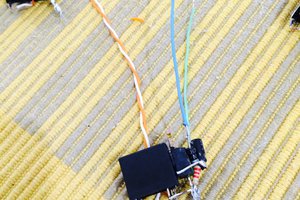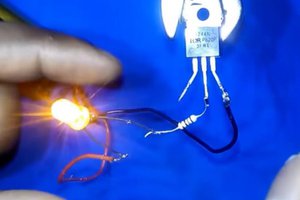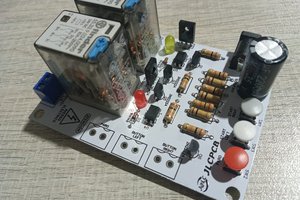In a previous How-To Guide I demonstrated how to drive a variable speed fan with Snap Circuits and the Kano Computer. You could safely use the Snap Circuits transistor with the Snap Circuits motor (M4) since there isn't much load on the motor simply spinning the fan attachment. As you increase the load on the motor's axle (for instance connecting it to a gear box) it will tend to draw more current and this can cause the transistor to overheat. And this can change from motor to motor. You can drive a Lego Technic motor to spin simple magnetic stirrer, but an erector set motor will cause the transistor to overheat with no load at all. If you are using a transistor with a motor and you release the magic smoke from your transistor (and smell the burning odor), your transistor usually stops working. Then you might want to consider switching to a relay.
What’s a relay? You’ve probably seen a relay race where one runner hands off a baton to another runner. Similarly, an electronic relay hands off control from one circuit to another. A relay is a very simple device consisting of an electromagnet, an armature (a switch that closes when attracted by the electromagnet), and a spring that is connected to the armature.

(Diagram inspired by: http://electronics.howstuffworks.com/relay1.htm)
In Figure 1 (above), there are two circuits. The first circuit is a battery (3 volts), a switch and an electromagnet. The second circuit is a battery (6 volts), a light bulb and the relay’s armature. While the switch to the electromagnet is off, no current can flow from the 3 volt battery through the electromagnet. So, the armature-switch is off and no current can flow from the 6 volt battery to power the lamp in the second circuit.
In Figure 2 (above) the switch to the electromagnet circuit is switched on. When current from the 3 volt battery flows through the electromagnet, the electromagnet creates a magnetic field that attracts the armature to close the circuit to the lamp. Now current can flow from the 6 volt battery to the lamp, and the lamp lights up.
If you look closely at Figure 2, you’ll notice that while the armature-switch is closed allowing the current in the lamp circuit to flow from the 6 volt battery to the lamp, it does not come into contact with the electromagnet so, the 6 volts from the lamp circuit cannot flow into the electromagnet circuit. Thus, the 3 volts in the electromagnet circuit and the 6 volts in the lamp circuit remain separate.

Above is the electronic schematic diagram of a relay. The curly line represents the electromagnetic coil and the vertical lines represent the metal core the coil is wrapped around. The switch at the top of the diagram represents the armature.

Electronic schematic of the circuits from Figures 1 and 2.
Build the Relay Circuit With Snap Circuits
Parts Needed:
3 Battery Holder (2-AA) # 6SC B1
1 Base Grid (11” x 7.7”) # 6SC BG
1 Slide Switch # 6SC S1
1 Snap Circuits Lamp SOCKET # 6SC L2 (with bulb)
1 Relay # 6SC S3
1 Conductor with 2-snaps # 6SC 02
2 Conductor with 3-snaps # 6SC 03
1 Conductor with 4-snaps # 6SC 04
Build the following circuit:

When you press the press switch (S1) you will hear the relay click as current passes from the 3 volt battery block (B1) through the electromagnet. The electromagnet creates a magnetic field that attracts the metal armature and closes the circuit to power the lamp circuit.
When you release the press switch you will hear the relay click again since the current has been cut from the electromagnet. This causes the electromagnetic field to collapse so the armature is no longer attracted by the electromagnet and the spring attached to the armature returns the armature to its rest position. This opens the lamp circuit which cuts the current from the batteries to the lamp and the light goes out.
Often when using electronic relays in circuits it is recommended that you insert a flyback diode to protect sensitive electronics. The magnetic coil in the relay stores electricity like a...
Read more » Steve Schuler
Steve Schuler

 GNbyma
GNbyma

 Alpenglow Industries
Alpenglow Industries
 ElectronicABC
ElectronicABC
Steve: Thanks for the Elenco reminder ! I made some input (both technical & educational)...